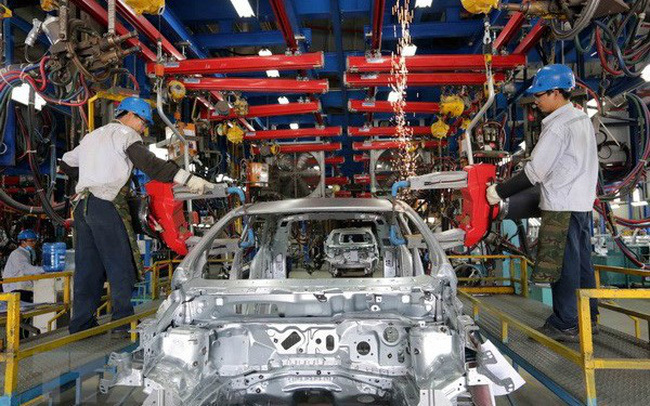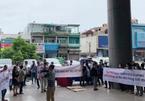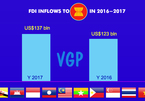China pours big money into Vietnam
The latest report of the Vietnam Institute for Economic and Policy Research (VEPR) shows unstable growth in FDI in Vietnam since 2018.

The US-China trade tensions which began in 2018 was hoped to help increase the foreign capital flow to Vietnam.
In the first six months of the year, FDI increased by 9.7 percent, or higher than the 8.5 percent increase of the same period last year, but this did not catch up with the growth of the non-state sector.
|
In the first six months of the year, FDI increased by 9.7 percent, or higher than the 8.5 percent increase of the same period last year, but this did not catch up with the growth of the non-state sector. |
By the end of June, 1,723 projects were licensed, an increase of 26.1 percent, with total registered capital of $7.411 billion, a decrease of 37.2 percent compared with the same period last year.
Statistics show that processing and manufacturing industries remain fields that attract most FDI, accounting for 73.4 percent of total newly registered capital. The investments in the real estate sector also increased, accounting for 10.8 percent of total capital and 6.5 percent of newly registered capital.
VEPR’s research team warned of the possible oversupply in the real estate market, or the real estate bubble.
Among foreign investors, China continues to be the biggest investor with newly registered capital of $1.676 billion. The subsequent positions belonged to South Korea with $1.239 billion, Japan $972 million and Hong Kong $920.8 million.
The US-China trade tensions and CPTPP have prompted China to make heavier investment in Vietnam. Chinese newly registered capital alone now accounts for 22.6 percent of total capital.
Question about absorbing FDI
“Vietnam’s strong and weak points have been exposed in the trade war,” Nguyen Duc Thanh, head of VEPR, said.
According to Thanh, Vietnam is in the middle of the regional and global production chains, therefore, even when foreign investors relocate their factories out of China, the best companies won’t choose Vietnam as the destination.
“Big corporations of the US and Japan move to Malaysia, Thailand and Indonesia. The capital flow to Vietnam has increased, but from medium companies with corresponding technologies,” Thanh said.
This means that the regional producers don’t highly appreciate Vietnam’s labor force, market development or institutional mechanisms.
Meanwhile, Can Van Luc from BIDV said he is always asked by foreign experts about Vietnam’s capability to absorb foreign capital.
According to Luc, four factors are needed to absorb the capital, including institutional mechanism, or investment environment, infrastructure, skilled workers and the development of supporting industries.
Linh Ha

Disillusioned about FDI: experts
If Vietnam doesn’t have a reasonable policy on using capital from FDI, it will have to pay a heavy price for it, experts say.
f

Vietnam among top FDI recipients in ASEAN in 2016-2017
Foreign direct investment flows to ASEAN rose to all-time high of US$137 billion in 2017 from US$123 billion in 2016, according to ASEAN Investment Report 2018.
 The best factories and companies from the US and Japan do not move to Vietnam, but to Malaysia, Thailand and Indonesia." itemprop="description" />
The best factories and companies from the US and Japan do not move to Vietnam, but to Malaysia, Thailand and Indonesia." itemprop="description" />